Sophie Violet Gilmore – 8 December, 2014
In a clever convolution the use of “symbolism” as a communicatory device is apparent, by which objects shrouded in cultural meaning are claustrophobically embroiled with objects that are seemingly random. The consequence of this ironic and oppositional tactic, shown in 'Babes and Fools', is that as much mythic energy can be derived from a watering can or a pair of orange-handled scissors as from the appearance of a Holy Lamb.
Dunedin-based painter Kushana Bush‘s work has always involved awe-inspiring detail and intricacy, a technical perfectionism which almost defies belief, but these qualities are dramatically enhanced in her latest exhibition, the incredible Nais Tambu Pepa Piksas. The exhibition marks her fifth appearance at Brett McDowell Gallery, a simple and unimposing space which is an ideal host to her complicated works. Nais Tambu Pepa Piksas demonstrates a dazzling (and very post-modern) synthesis of art historical traditions ranging from Medieval frescos to Flemish Renaissance painting and ukiyo-e wood block prints, while the vibrant, graphic quality of New Zealand regionalism is also evoked. The result is a body of works which are by equal measures charming, disconcerting, witty, transcendental and slightly creepy.
This exhibition shows a significant progression in Bush‘s style since her extremely prolific period as Francis Hodgkins Fellow in 2011, which culminated in the exhibition All Things to All Men displayed at the Hocken Library. While previously the chaotically entwined figures of Bush’s paintings were suspended in a neutral, vacuum-like ground, they are now stabilised inside firm architectural limits, as in Holy Man, where a grieving procession carrying a Christ-like figure is dramatically framed by a sombre grey archway. In another significant change, intense yet tastefully balanced colour permeates each of the new works, especially in the lucid Morality Play in which a multiplicity of hues interact in a lustrous swarm, enhanced by the use of gold-leaf. However, the skin of her cast of figures, innumerable in each piece (and including babies which appear, after the medieval tradition, as strange miniature adults) remains characteristically and disquietingly pallid.
In a clever convolution the use of “symbolism” as a communicatory device is apparent, by which objects shrouded in cultural meaning are claustrophobically embroiled with objects that are seemingly random. The consequence of this ironic and oppositional tactic, shown in Babes and Fools, is that as much mythic energy can be derived from a watering can or a pair of orange-handled scissors as from the appearance of a Holy Lamb. Bush deals with the broad theme of the performative or ritualistic aspects of religion, In Alabaster Man a crowd decorates the blank figure of an idol, while in The Serpent and the Sea a theatrical performance of a religious narrative is inventively shown from behind, depicting props which are cut out of a Dole banana box, illustrating the entanglement between solemn, spiritually charged rituals and the mundane fixtures of everyday life. Despite their deep subject matter, the works are in no way pompous but are inscribed with subtle irony. They are neither serious nor flippant.
So much is happening in each of the works that they require a lengthy contemplation surprising for their compact size. The cluttered composition of the works, most extreme in the frenetic Life, require sustained effort on the viewer’s part to take in and decipher, bearing their rewards gradually. Every face displays a distinct, intriguing expression; every piece of fabric is adorned with an intricate pattern; every figure seems to grasp an object in their hand (some of which provide a jolting sense of the contemporary amongst the historical, such as a cigarette or milkshake cup) or is engaged in a complex interaction with another figure. Strands of hair and fingernails are individually and painstakingly rendered. It seems rare in contemporary painting for the technical labour of an artwork to present itself as a category for admiration but this exists as one of the most forceful elements of Bush’s work.
Exerting a hypnotic visual appeal which is too prickly to be described as “beautiful”, the works in Nais Tambu Pepa Piksas provide a totally unusual kind of viewing pleasure, drawn from the dissonance between the tumultuousness of the content and the meditative technical and aesthetic sophistication with which it is rendered. Mesmerizing.
Sophie Violet Gilmore
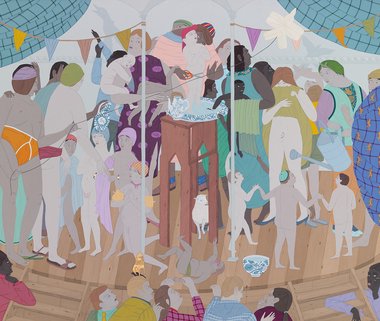



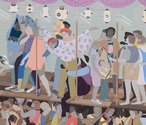

 Two Rooms presents a program of residencies and projects
Two Rooms presents a program of residencies and projects Advertising in this column
Advertising in this column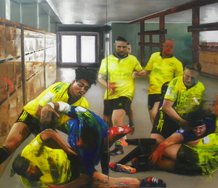
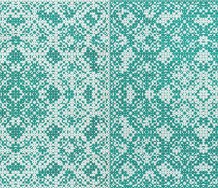
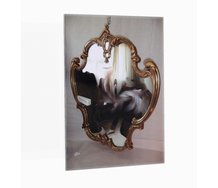
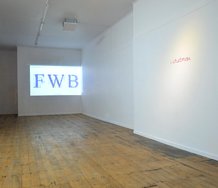
This Discussion has 0 comments.
Comment
Participate
Register to Participate.
Sign in
Sign in to an existing account.